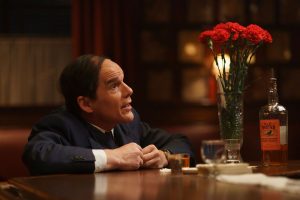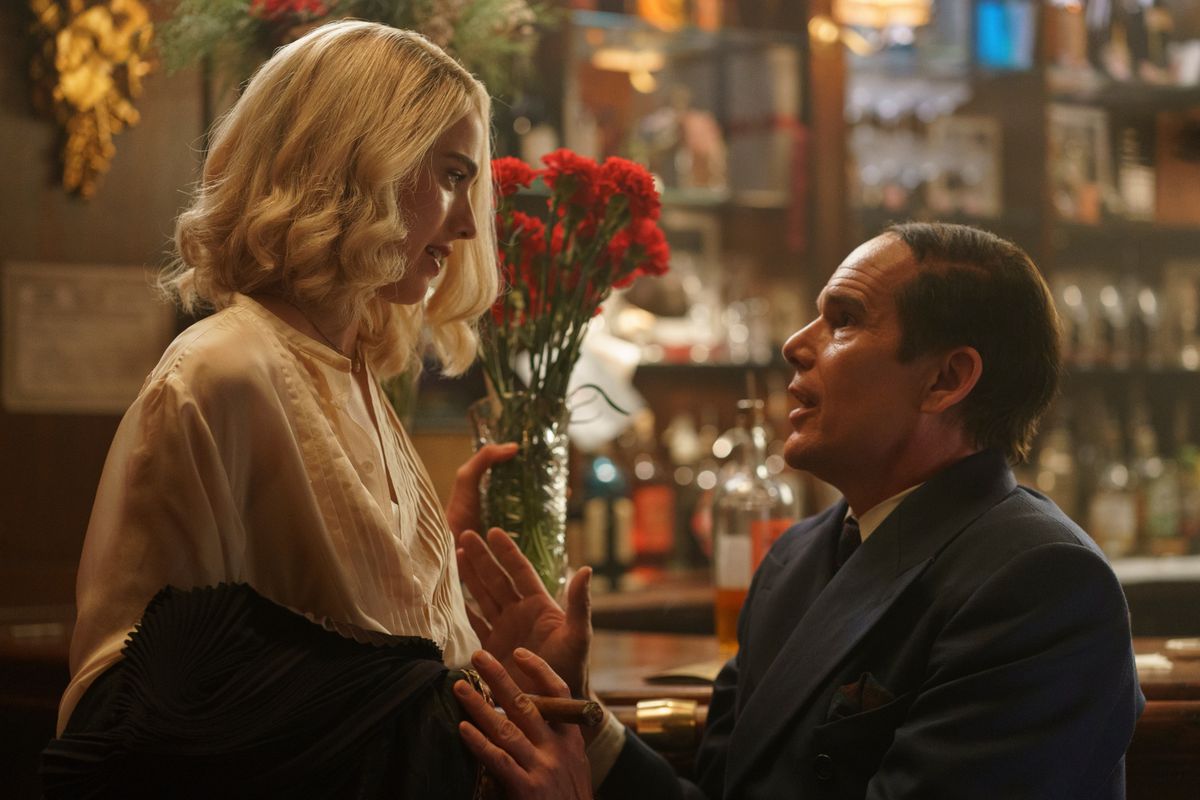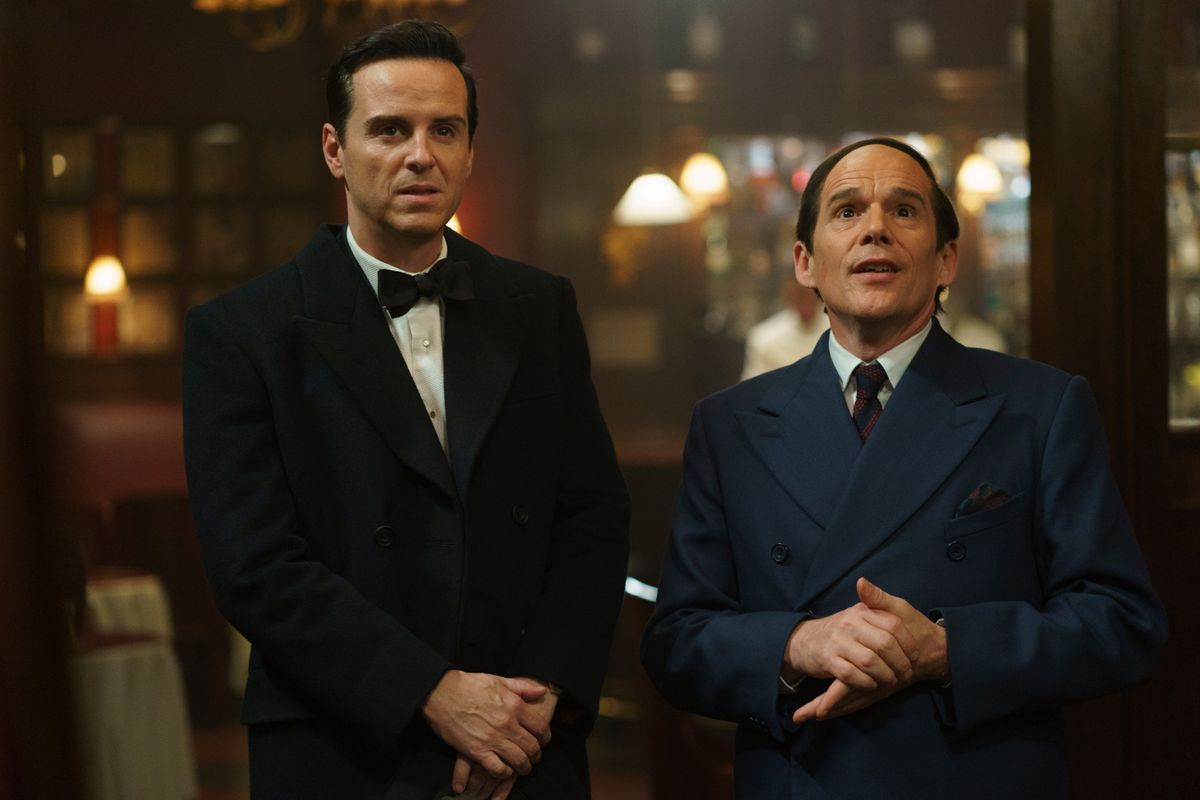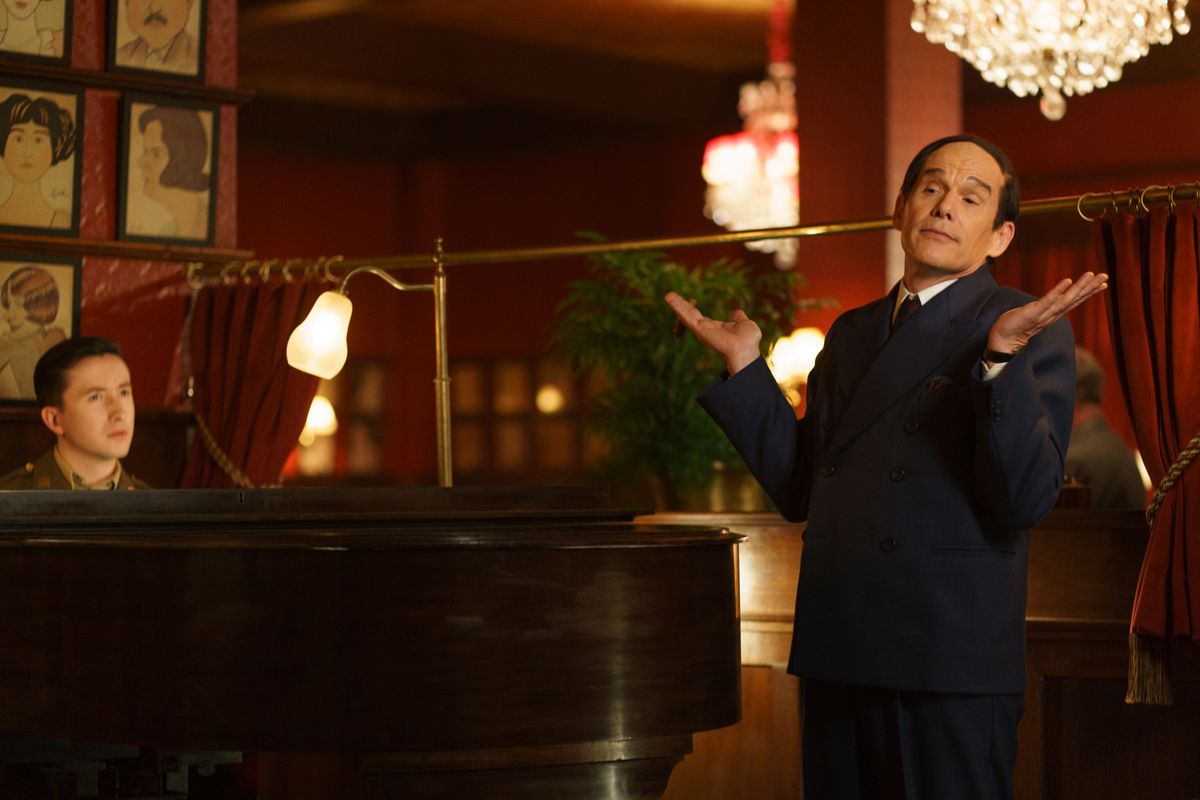For a filmmaker once synonymous with slackerdom, Richard Linklater has proven to be one of the most prodigious and consistently excellent American filmmakers. A small but rich vein of the two dozen features he’s made have been portraits of artists, including “Me and Orson Welles” and, if you like, “School of Rock.”
This fall brings two more, one set at the dawn of a great career ( “Nouvelle Vague,” about Jean-Luc Godard and the birth of the French New Wave) and another on the cusp of its tragic end: “Blue Moon,” about lyricist Lorenz Hart. Both are, in their way, joyous celebrations of brilliant, stubbornly uncompromising creative visionaries. And both are a grand time at the movies.
“Blue Moon,” the first to arrive of the two, is one of the more sheerly delightful movies of the year. It takes place at Sardi’s, in New York, on March 31, 1943. Down the street, “Oklahoma!” is premiering, a debut that for Hart (Ethan Hawke) stings. His longtime collaborator, the composer Richard Rodgers, has made it not with Hart but with his new songwriting partner, Oscar Hammerstein II. Six months from this night, Hart will die from pneumonia after spending a cold night passed out outside an 8th Avenue bar. He was 48.
But while Broadway’s focus is on “Oklahoma!” ours is on Larry, as everyone calls him. He’s holding court at Sardi’s before Rodgers (Andrew Scott) and the “Oklahoma!” crowd rushes in. There, he is regaling Eddie the bartender (Bobby Cannavale) and a few others (including E.B. White, played by Patrick Kennedy) in a free-flowing monologue, as he tries to resist the glass of whiskey on the bar, laments the imminent sensation of “Oklahoma!” and waxes poetic about some of his best lines.
“I’ve written a handful of words that are going to cheat death,” says Larry. Hart’s best work included American songbook standards like “My Funny Valentine,” “The Lady Is a Tramp,” “Bewitched, Bothered and Bewildered” and, of course, “Blue Moon.”
But his appreciation for language goes far beyond himself. As much as he does a warm sip of bourbon, Larry savors any good quip, turn of phrase or mot juste. His favorite quote from “Casablanca,” for example, is a telling one: “Nobody ever loved me that much.” Larry adores the movie and, in particular, Bogart, whom, he notes, is both short and a leading man. “Which proves you can be both,” Hart says.
Larry is, himself, diminutive, with greasy strands of hair combed over his bald head. The physical transformation for Hawke is a little extreme and potentially distracting. There’s little superficial in the role — including that Hart was a closeted gay man — that screams Hawke. Yet the actor has simply never been better. Hawke’s Larry is a magnetic raconteur and an increasingly desperate has-been whose last-ditch attempts to reingratiate himself to Rodgers are limited as much by his excessive drinking as his refusal to hold his tongue. He is, to put it simply, extraordinarily good company.
“Oklahoma!” Larry realizes, is going to be performed from that moment “until Doomsday.” Even that exclamation point irks him. But more than that, the success of “Oklahoma!” — a musical Larry deems a “fraudulent” portrait of America — casts his sorry situation in a poignant light. This is the dawn of a mainstream Americana that doesn’t have room for an unconventional man like Larry or his blue songs.
That makes this night at Sardi’s a bittersweet salvation and a tender eulogy. Larry has an audience of only a few, but they’re a fine crew (Cannavale is perfect) and their quiet, quip-filled toasts have an abiding warmth. On the outskirts of this group is Elizabeth Weiland (Margaret Qualley), a 20-year-old Yale student with whom Larry is infatuated. To others, Larry’s obsession seems incongruous with his sexuality, but he retorts that he “drinks beauty wherever he finds it.”
Robert Kaplow, whose novel “Me and Orson Welles” was the basis of Linklater’s film, drew from the real-life correspondence between Hart and Weiland for his script to “Blue Moon.” In the film, Elizabeth is ambitious and busy mingling with the “Oklahoma!” party. That she’s destined to join them, not Larry, is obvious to us. But his oblivious, irrational hope is one of the reasons to love him.
Linklater’s “Nouvelle Vague” is a wider story that, while the focus is on Godard, makes room for all the central characters of the New Wave. It’s a teeming movie, bursting at the seams with personalities. “Blue Moon,” though, is a solo act. And a magnificent one, at that. In its finest moments, Linklater’s film pays homage not just to Hart but to all the forgotten writers who couldn’t cheat death, but could tell one heck of a yarn.
“Blue Moon,” a Sony Pictures Classics release is rated R by the Motion Picture Association for language and sexual references. Running time: 100 minutes. Three and a half stars out of four.
By JAKE COYLE
AP Film Writer




